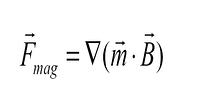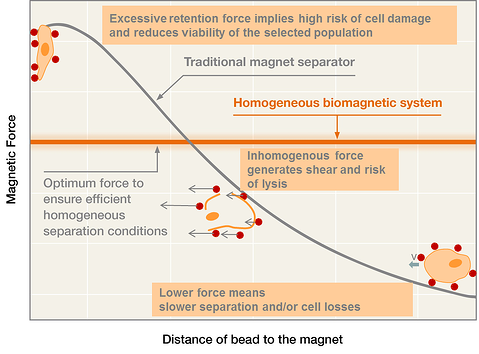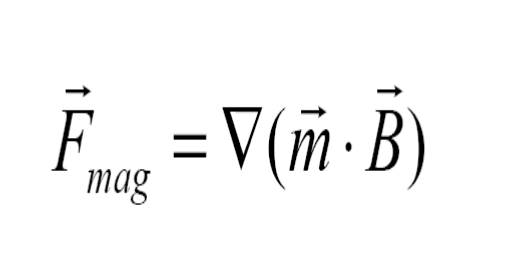Biomagnetic cell separation is an alternative to centrifugation, columns, filtration and precipitation. It eliminates undue cell-stress and reduces the risk of negative impact on cell function and phenotype.

Sorting cells from a heterogeneous population enables the study of the different isolated types, but also allows for the introduction of enriched cell populations to a patient. The use of highly selective separation procedures is also critical to improve cell-based treatments on stem cell therapy, tissue engineering and regenerative medicine.
If you are interested in cell isolation with biomagnetic separation, download our newest guide Does it matter which magnetic separation rack I use in my cell isolation processes?:
The typical biomagnetic cell sorting process
In a typical process, magnetic beads are added to a cell-sample, which is then incubated. When these labeled cells are placed with the entire mixed-cell population into a Biomagnetic Separation system, the targeted cells are pulled by magnetic force, separating them from the cell culture with the attached beads.
However, in spite of the numerous types of magnetic beads available, the process does not always work as well as it should: Recovery is poor, cells are crushed by excessive force, reproducibility is questionable and scale-up over few milliliters seems impossible.
To understand why these problems appear, we should remember that magnetic force is related to two factors:
-
The magnetic moment of the beads attached to the cell and,
-
The magnetic field variation.

As consequence, a uniform magnetic field does not generate a magnetic force. The force is proportional to the magnetic field gradient (when the magnetic beads are saturated) or to the gradient of the square of the magnetic field (when the field is very small). Put simply, a magnetic rack generates a magnetic force over the magnetic beads, not because it generates a strong magnetic field, but because it generates a magnetic field that varies quickly with distance.
In classical magnetic separation racks, the variation of the magnetic field generates a force that also varies with distance. The force is usually very strong at the retention area but decreases quickly with distance. This leads to several problems:
1) Long separation time and/or cell losses due the low force over the farthest cells.
Although separation may sometimes work well in the initial scale, as soon as a different well or tube volume is used, the magnetic force experienced by the cells is entirely different. The force over the farthest beads would quickly decrease when the distance to the retention are increase. Then, when the project volume increases losses and separation time increase almost exponentially if classical magnetic racks are used.
2) Cell damage caused by the strong separation force in the retention area
The quick force variation with the distance leads to low force away, but also to a high increase of the force when beads are approaching the retention area. This leads to high risk of cell damage and reduced viability of the selected population (critical in positive selection) and the release of unlabeled remains to the supernatant (very significant in negative selection). When, using classical magnetic racks, we try to increase the force over the farthest beads we are multiplying the force in retention area.
Even assuming we can solve the first problem, the price would be to worsening the second. A trade-off, if possible, can only be found for very specific circumstance: small volume, one single type of cell and magnetic beads. And it would be impossible to reproduce if any of these parameters is changed.
3) Undesired lyse due to the inhomogeneity of the force with the distance
As the cells are relatively big compared with the magnetic beads), the force changes with the distance have other undesired effects. The different beads attached to the cell experience will experience different forces, both in magnitude and direction. That generates shear over the cell membrane, as each single beads is pulling with different force, with consequential risk of lyse during the process.

The three problems described are a big challenge when biomagnetic cell sorting is put in practice.
Great efforts are made to select the right markers and magnetic beads to ensure their correct attachment to the desired cells. However, all this effort goes to waste if the wrong magnetic separation rack is used. Still worse, with inhomogeneous magnetic force is difficult to distinguish when cell sorting problems are caused by the biomarker or the separation process itself.
But, if we are aware of about the limitations of the classical magnetic separation racks for establish and validate protocols, we can look for alternative solutions to benefit of magnetic cell sorting without experience these problems.
On the next post about cell sorting we will discuss how using the right magnetic field profile may solve the described problems. In case you didn't read it, be sure to check this previously related post:




